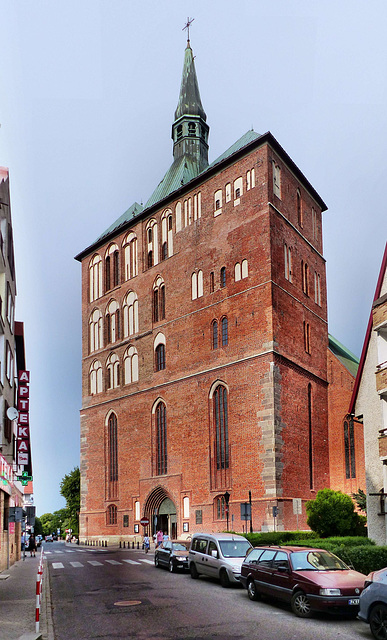Kołobrzeg - Bazylika konkatedralna Wniebowzięcia N…
Kołobrzeg - Bazylika konkatedralna Wniebowzięcia N…
Kołobrzeg - Bazylika konkatedralna Wniebowzięcia N…
Kołobrzeg - Bazylika konkatedralna Wniebowzięcia N…
Kołobrzeg - Bazylika konkatedralna Wniebowzięcia N…
Kołobrzeg - Bazylika konkatedralna Wniebowzięcia N…
Kołobrzeg - Bazylika konkatedralna Wniebowzięcia N…
Kołobrzeg - Bazylika konkatedralna Wniebowzięcia N…
Kołobrzeg - Bazylika konkatedralna Wniebowzięcia N…
Koszalin - Katedra Niepokalanego Poczęcia Najświęt…
Koszalin - Katedra Niepokalanego Poczęcia Najświęt…
Koszalin - Katedra Niepokalanego Poczęcia Najświęt…
Koszalin - Katedra Niepokalanego Poczęcia Najświęt…
Koszalin - Kaplica św. Gertrudy
Darlowo - Rynek
Darlowo - Brama Wysoka
Darlowo - Kościół Matki Bożej
Darlowo - Kościół Matki Bożej
Darlowo - Kościół Matki Bożej
Darlowo - Kościół św. Gertrudy
Ustka
Slupsk
Slupsk - Brama Mlyńska
Trzebiatów - Hansken
Trzebiatów - Kościół Macierzyństwa Najświętszej Ma…
Trzebiatów - Rynek
Kamień Pomorski - Konkatedra w Kamieniu Pomorskim
Kamień Pomorski - Konkatedra w Kamieniu Pomorskim
Kamień Pomorski - Konkatedra w Kamieniu Pomorskim
Kamień Pomorski - Konkatedra w Kamieniu Pomorskim
Kamień Pomorski - Konkatedra w Kamieniu Pomorskim
Kamień Pomorski - Konkatedra w Kamieniu Pomorskim
Kamień Pomorski - Konkatedra w Kamieniu Pomorskim
Kamień Pomorski - Konkatedra w Kamieniu Pomorskim
Kamień Pomorski - Santiago de Compostela
Kamień Pomorski - Ratusz
Szczecin - Zamek Książąt Pomorskich
Szczecin - Jarmark Jakubowy
Szczecin - Kościół św. Piotra i św. Pawła
Szczecin - Ratusz Staromiejski
Szczecin - Rynek Sienny
Szczecin - Rynek Sienny
Szczecin
Szczecin
Szczecin - Szczecin Cathedral
Location
Lat, Lng:
You can copy the above to your favourite mapping app.
Address: unknown
You can copy the above to your favourite mapping app.
Address: unknown
See also...
Keywords
Authorizations, license
-
Visible by: Everyone -
All rights reserved
-
101 visits
Kołobrzeg - Bazylika konkatedralna Wniebowzięcia Najświętszej Maryi Panny


In the course of the German eastward expansion settlers settled near an existing Slavic settlement. A village with a surrounding wall was created. In 1255 the "new" settlement of Kolberg received the town charter according to the "Lübsches Stadtrecht". In 1277 Kolberg became part of the Cammin Abbey, the bishop's secular domain. Kolberg probably belonged to the Hanseatic League and remained in this association until 1610. In this heyday of the town, salt production, salt trade and fishing were the main sources of income of Kolberg and brought great prosperity.
In 1442, there was a conflict between the Bishop of Cammin and Kolberg, as a result of which the Bishop besieged the town, but Kolberg successfully repelled the attack.
From 1530 the Reformation was introduced in Kolberg, and in 1534 the Catholic institutions in the town were abolished by a decision of the town council.
In the 17th century, Kolberg depopulated due to the plague and the Thirty Years' War with its effects. In 1627 imperial troops occupied the town and fortified it. In 1631 Swedish troops conquered Kolberg after a five-month siege.
Kolberg came to Brandenburg-Prussia with the Peace of Westphalia in 1648, but was not given up by the Kingdom of Sweden until 1653.
The Kołobrzeg Cathedral ("Bazylika konkatedralna Wniebowzięcia Najświętszej Maryi Panny") was started around 1300. It was completed in the first stage in 1321 and had the form of a three-nave hall church. After that, the presbytery, two aisles and the tower were gradually built.
After the Reformation in Pomerania, the church became Protestant in 1531. At the beginning of the 18th century, the cathedral was in very poor condition. Multiple sieges and enemy shelling and fires had severely damaged it. It was not until the end of the 19th century that the cathedral finally underwent extensive restoration.
In March 1945, the church was severely damaged during the capture of Kolberg by Soviet troops. The vault of the nave collapsed, the entire church burned out.
Until the 1960s, the Museum of Polish Arms used the half-destroyed church to display military objects. The reconstruction of the church began after the ruins were transferred to the Catholic Church in 1974.
In 1442, there was a conflict between the Bishop of Cammin and Kolberg, as a result of which the Bishop besieged the town, but Kolberg successfully repelled the attack.
From 1530 the Reformation was introduced in Kolberg, and in 1534 the Catholic institutions in the town were abolished by a decision of the town council.
In the 17th century, Kolberg depopulated due to the plague and the Thirty Years' War with its effects. In 1627 imperial troops occupied the town and fortified it. In 1631 Swedish troops conquered Kolberg after a five-month siege.
Kolberg came to Brandenburg-Prussia with the Peace of Westphalia in 1648, but was not given up by the Kingdom of Sweden until 1653.
The Kołobrzeg Cathedral ("Bazylika konkatedralna Wniebowzięcia Najświętszej Maryi Panny") was started around 1300. It was completed in the first stage in 1321 and had the form of a three-nave hall church. After that, the presbytery, two aisles and the tower were gradually built.
After the Reformation in Pomerania, the church became Protestant in 1531. At the beginning of the 18th century, the cathedral was in very poor condition. Multiple sieges and enemy shelling and fires had severely damaged it. It was not until the end of the 19th century that the cathedral finally underwent extensive restoration.
In March 1945, the church was severely damaged during the capture of Kolberg by Soviet troops. The vault of the nave collapsed, the entire church burned out.
Until the 1960s, the Museum of Polish Arms used the half-destroyed church to display military objects. The reconstruction of the church began after the ruins were transferred to the Catholic Church in 1974.
- Keyboard shortcuts:
Jump to top
RSS feed- Latest comments - Subscribe to the comment feeds of this photo
- ipernity © 2007-2025
- Help & Contact
|
Club news
|
About ipernity
|
History |
ipernity Club & Prices |
Guide of good conduct
Donate | Group guidelines | Privacy policy | Terms of use | Statutes | In memoria -
Facebook
Twitter

Sign-in to write a comment.